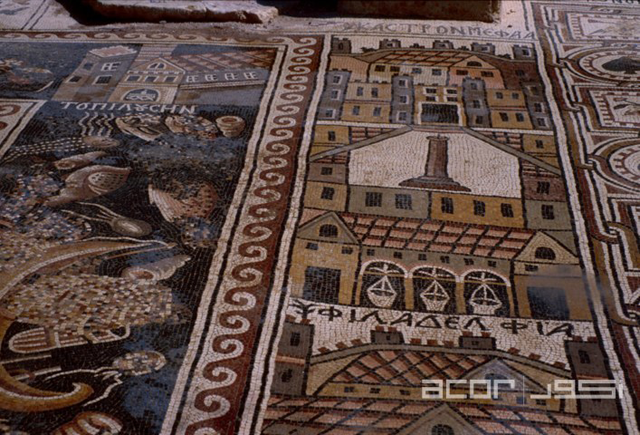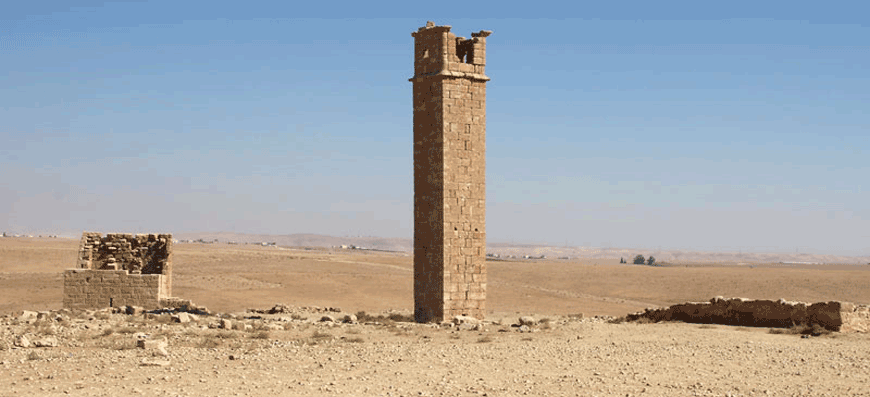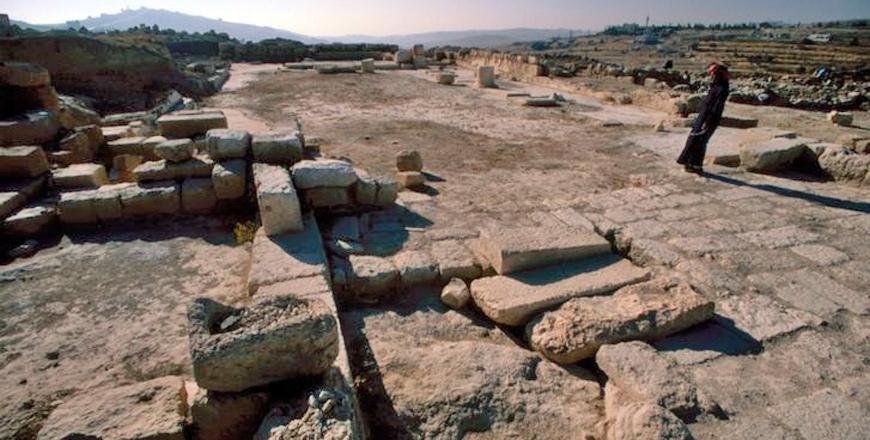You are here
Umm ar-Rasas: Delving into burial rituals during Roman, Byzantine times
By Saeb Rawashdeh - May 01,2024 - Last updated at May 01,2024

Church of St. Stephen, mosaic floor, at Kastron Mefaa-Umm ar-Rasas (Photo courtesy of ACOR)
AMMAN — Kastron Mefa'a (Umm ar-Rasas) is located 30 kilometres southeast of Madaba, in central Jordan. The site was known as a Roman military outpost in a desert and was one of the important localities on the King's Highway. Kastron Mefa'a is mentioned in the Bible and was of interest for different Orientalists who roamed around this region in the late 18th and during 19th and 20th centuries. The site consists of Roman, Byzantine and Umayyad ruins, which became inscribed at the UNESCO World Heritage sites during the modern times.
During the Roman period, it was one of the sites that formed the Limes Arabicus, a desert frontier aiming to protect the south-eastern flank of the Roman Empire from desert raiders and the Sassanid Empire.
Umm ar-Rasas is known for its sacral architecture, churches and mosaics preserved on the floors. The mosaic floor in the Church of Saint Stephen was made in 785 AD and it is the largest one in Jordan.
The practice back in the days of the Byzantine Empire was to grant prominent and wealthy citizens a burial within the churches area. It has been attested by the available archaeological evidence. Also, the epitaphs and funerary goods can testify about well-off people who were buried inside churches in Umm ar-Rasas.
In the Roman and early Byzantine times, the custom of dressing deceased in clothes that they considered their favourites and emphasised their social status was well documented.
"In Umm er-Rasas, several burials in the churches of the northern district of the settlement were found and the excavations in the church of Bishop Sergios, in the Court Church, in the Saint Stephen Basilica and in the Aedicula Church show several pit tombs built with blocks of masonry stones with an east-west orientation and covered by large slabs as well as a hypogean funerary chapel," noted Davide Bianchi, a postdoctoral research associate at the Austrian Archaeological Institute in Vienna.
“In most of the cases, the bodies, at least two or more per tomb, were laid supine with their head turned to the West and accompanied by funerary goods, mainly jewels,” Bianchi continued, adding that the most significant case of possible lay burials is in the so-called Court Church, dated to the beginning of the 7th century AD, where two rectangular pit tombs covered with four stone slabs and characterised by the usual east-west orientation were recognised.
Inside the tombs, archaeologists found the skeletons of sixteen bodies and a large group of funerary goods, including necklaces of glass paste beads, a bone crest needle, finger-rings, bracelets, copper crosses, and small fragments of iron chain metallic bracelets, which were probably worn by the deceased at the time of the burial.
"The presence of three iron buckles with a fixed fitting, typically belonging to male clothes, suggests that the bodies were men," Bianchi said, adding that personal jewellery items, glass vessels and balsamaria were found in the burial places of the Aedicula Church at Umm ar-Rasas.
Furthermore, these vitreous finds, which may have had a ritual function, are not isolated cases in the province of Arabia, as shown by the juglets found in a tomb close to the Western Church of Ma’in ,some of which were eulogia glass vessels, the scholar said.
"Unfortunately, no bio-archaeological investigation has so far been carried out on the bones to identify their biological sex; however, the privileged burial place inside the churches of the ecclesiastical complex of Saint Stephen would suggest that members of the local elite could be buried in these tombs," Bianchi concluded.
Related Articles
AMMAN — Located along the desert, around 70km south of Amman, Umm ar-Rasas is a UNESCO-inscribed site known as the third Jordanian World Her
AMMAN — Umm ar-Rasas, some 75 km south of Amman, has a glorious past that covers different historical periods including the Iron Age, the Na
AMMAN — A fish-shaped glass vessel from the Byzantine period was just one of many significant discoveries found at Khirbet Yajuz, some 11km


















